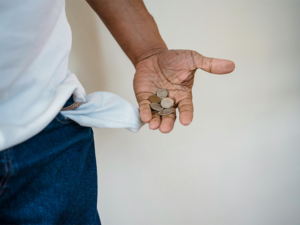What Is The Difference Between Chapter 7 And Chapter 13 Bankruptcy?

Chapter 7 Bankruptcy
Chapter 7 bankruptcy offers a lifeline to those drowning in unsecured debt. Known legally as the “liquidation” chapter, it allows you to discharge most or all of these debts relatively quickly, giving you a clean slate to rebuild your finances.
Eligibility for Chapter 7 hinges on passing the “means test,” a calculation intended to ensure that one’s income is not above a certain threshold. Individuals who surpass the specified income level may need to explore alternative bankruptcy options, as Chapter 7 is unavailable to them.
One of the critical aspects of Chapter 7 involves the potential loss of property. To settle outstanding debts, a trustee sells the debtor’s non-exempt assets, a stark contrast to the reorganization method characteristic of Chapter 13 bankruptcy where asset retention is possible.
Chapter 7 is typically a faster process compared to Chapter 13. It can be completed in as little as three to six months, allowing you to move forward with your financial recovery quickly. Once the process is complete, most of your unsecured debts (like credit cards and medical bills) are discharged. This frees you from the burden of this debt, allowing you to focus on rebuilding your financial future.
Chapter 13 Bankruptcy
Chapter 13 bankruptcy is a great option if you have a steady income but are struggling with overwhelming debt. Unlike Chapter 7, it doesn’t involve selling your assets. Instead, you create a court-approved repayment plan that lasts 3 to 5 years.
A major benefit of Chapter 13 is the retention of property. Debtors are allowed to keep their assets, including their homes, which might otherwise be at risk of foreclosure. They restructure their financial obligations under the supervision of the bankruptcy court, committing to a systematic repayment course in accordance with their financial capability.
Debtors will work with a court-appointed trustee to create a plan that details how they’ll repay their creditors over time. The plan considers their income and expenses to ensure it’s realistic and manageable. Chapter 13 facilitates a gradual yet tangible progression towards solvency, while simultaneously allowing debtors to catch up on delinquent mortgage payments or car loans under the protection of the bankruptcy code.
Upon the successful completion of the repayment plan under Chapter 13, any remaining unsecured debt is usually discharged. This process, though longer than Chapter 7, can be a good option if you want to keep your assets and gradually work your way out of debt. It enforces a structured approach to repayment, helping you build a solid foundation for your future.
Key Differences Between Chapter 7 and Chapter 13
Understanding the differences between Chapter 7 and Chapter 13 bankruptcy simply involves being aware of their distinct approaches to debt relief. For one, while Chapter 7 discharges unsecured debts rapidly and is structured for those who cannot meet their financial obligations, Chapter 13 reorganizes debt – offering a structured repayment plan to those with a regular income.
Additionally, both chapters approach asset liquidation differently. In Chapter 7 bankruptcy, trustees may sell non-exempt property to repay creditors. Contrastingly, Chapter 13 protects debtors’ assets, allowing them to restructure their financial obligations without the fear of losing their property.
More so, a Chapter 7 case can reach its resolution in a matter of months, whereas Chapter 13 bankruptcy typically unfolds over a three to five-year period. Finally, both chapters differ in their eligibility criteria. For Chapter 7, applicants are required to pass a stringent means test to qualify. Meanwhile, those with higher incomes may instead find recourse through Chapter 13, which caters to individuals capable of adhering to a long-term payment strategy.
Factors to Consider When Choosing Between Chapter 7 and Chapter 13
When contemplating bankruptcy, one’s current financial situation is the primary determinant in deciding between Chapter 7 and Chapter 13. Chapter 7 is ideal for those facing insurmountable debt with limited disposable income. Its swift discharge of unsecured debts offers immediate relief. However, if you have a steady income and manageable debt, Chapter 13’s structured repayment plan might be a better option.
The nature of one’s debts also determines the choice of bankruptcy chapter. Unsecured debts such as credit card bills and medical expenses are generally dischargeable through Chapter 7, thereby providing immediate financial relief. Conversely, Chapter 13 is apt for individuals who wish to make up for missed mortgage or car loan payments over time, possibly avoiding foreclosure or repossession.
Meanwhile, the prospect of losing valuable assets can influence the decision between filing for Chapter 7 or Chapter 13. Chapter 7 may result in the liquidation of non-exempt property to satisfy creditors, a potential drawback for many. In contrast, Chapter 13 typically allows debtors to retain their assets, making it a more attractive option for those who have substantial equity in their property that they are not willing to forfeit.
Lastly, long-term financial goals are integral in the decision-making process. The short-term relief offered by Chapter 7 can pave the way for a quicker financial reset, albeit with the potential impact on one’s credit score and asset ownership. On the other hand, long-term repayment plans under Chapter 13, while more protracted, may work better to preserve homeownership and slowly rebuild financial stability.
Secure A Debt-Free Future Today!
At Sirody & Ruben Bankruptcy Center, we understand the dynamics of bankruptcy law and offer expert guidance to individuals who have found themselves in these challenging circumstances. Our experienced attorneys specialize in both Chapter 7 and Chapter 13 bankruptcies, providing personalized solutions to fit each client’s unique needs. Contact us today to take the first step towards a debt-free future!
